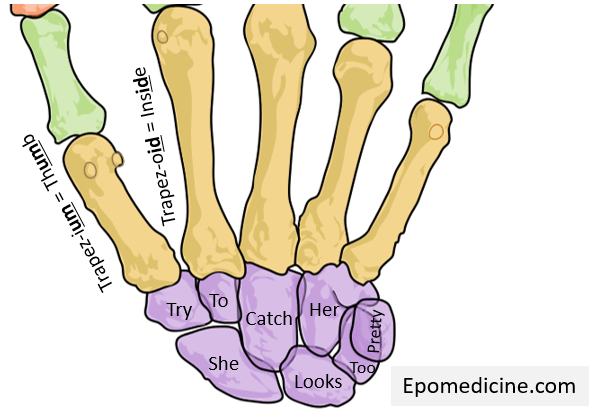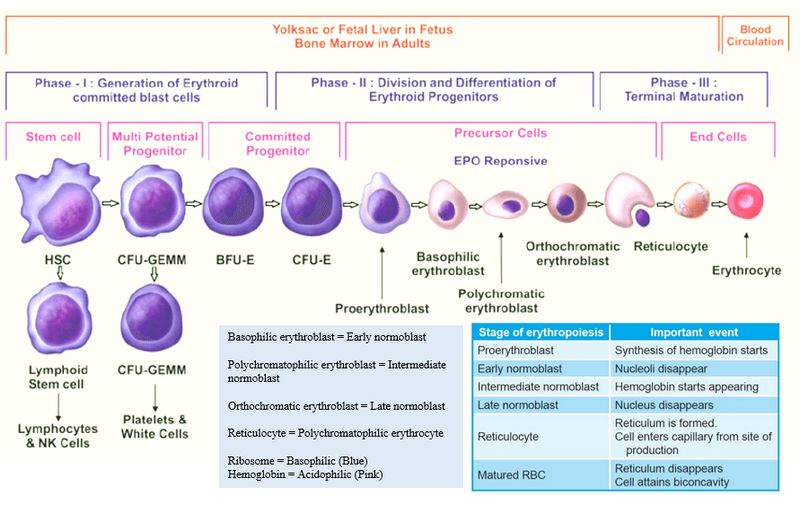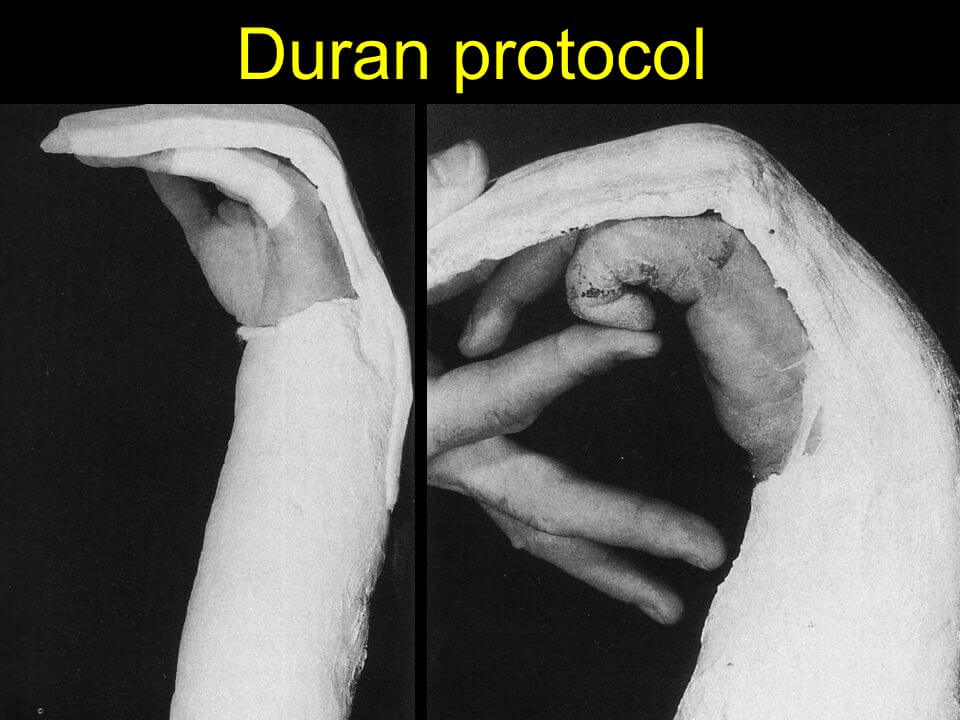There are certain well-known sentences used as a mnemonic to remember the names and arrangement of the 8 carpal bones in 2 rows.
- She Looks Too Pretty, Try To Catch Her
- Some Lovers Try Positions That They Cannot Handle

So using this mnemonic, we will learn the arrangement of the carpal bones:
a. Proximal row (radial to ulnar):
- Scaphoid (boat-shaped): most commonly fractured carpal bone
- Lunate (moon-shaped)
- Triquetral (pyramid-shaped)
- Pisiform (pea-shaped): smallest carpal bone (also classified as sesamoid)
b. Distal row (radial to ulnar):
- Trapezium (Irregular quadrilateral with one side parallel)
- Trapezoid (Irregular quadrilateral with no sides parallel): smallest carpal bone in distal row
- Capitate (head-shaped): largest carpal bone
- Hamate (having hook/hamulus)
The problem with this mnemonic is the two “T”s in distal row both starting from”Trapez-“.
This can be remembered using another simple trick:
- Trapez-ium: Towards thumb
- Trapez-oid: On it’s side or Inside


